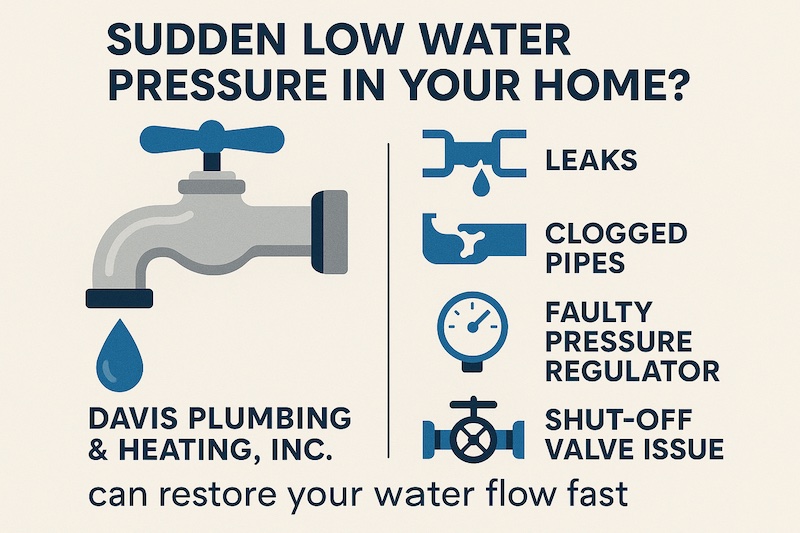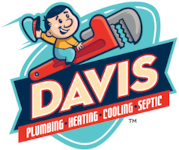Top Causes of Sudden Low Water Pressure in Your Home

Sudden low water pressure can disrupt your daily routine, making showers frustrating, dishwashing slow, and laundry inefficient. If you’ve noticed your faucets or showers suddenly delivering less water than usual, it’s time to investigate the root cause. Understanding what’s behind the problem can save you time, money, and unnecessary stress.
Here are the most common reasons for sudden low water pressure in homes.
1. Clogged Pipes or Aerators
Over time, mineral deposits and sediment can build up inside your pipes, faucets, or showerheads. This buildup restricts water flow and leads to noticeable drops in pressure.
What to do:
-
Remove and clean faucet aerators and showerheads.
-
Flush the system to remove sediment from pipes.
-
If the buildup is severe, a professional may need to descale or replace affected pipes.
2. Leaks in Your Plumbing System
A leak anywhere in your plumbing system can drastically reduce water pressure. Even small leaks can affect the flow at multiple fixtures. Common signs include damp spots, water stains, or the sound of running water when no taps are on.
What to do:
-
Inspect visible pipes for leaks.
-
Monitor your water meter for unusual usage when all water is off.
-
Call a professional plumber to locate and repair hidden leaks.
3. Malfunctioning Pressure Regulator
Many homes have a pressure regulator installed where the water line enters the house. If this device fails or gets stuck, water pressure can drop suddenly.
What to do:
-
Check the regulator for obvious signs of damage.
-
A licensed plumber can adjust or replace the pressure regulator safely.
4. Water Main Issues
Sometimes the problem isn’t inside your home at all. Water main breaks, municipal maintenance, or high demand in your neighborhood can temporarily lower water pressure.
What to do:
-
Contact your local water utility to check for outages or maintenance.
-
If the issue persists after the utility confirms no problems, call a plumber to inspect your system.
5. Corroded or Aging Pipes
Older homes with galvanized steel or iron pipes may experience corrosion, which narrows the pipe diameter and restricts water flow. This often happens gradually, but sudden blockages from rust or debris can cause a noticeable drop in pressure.
What to do:
-
Consider having your pipes inspected for corrosion.
-
Replacement with modern materials like copper or PEX may be necessary for long-term water flow improvement.
6. High Water Demand
Low pressure can sometimes occur when multiple fixtures are used simultaneously, such as washing machines, showers, or sprinklers. While this isn’t a plumbing “fault,” it can affect comfort.
What to do:
-
Avoid running multiple water-intensive appliances at the same time.
-
Install a booster pump if high demand is frequent and pressure is consistently low.
When to Call a Plumber
If you’ve tried simple fixes and water pressure remains low, it’s time to call a professional. Davis Plumbing & Heating, Inc. offers expert diagnosis and repair services in Riverside County, Menifee, Perris, and surrounding areas. Our trained technicians can quickly locate the cause of sudden low water pressure and restore your home’s water flow.
Signs you need professional help:
-
Persistent low pressure throughout the home.
-
Visible leaks or water damage.
-
Pressure issues affecting hot and cold water alike.
Final Thoughts
Sudden low water pressure is more than an inconvenience—it can signal leaks, corrosion, or other plumbing problems that could worsen over time. Addressing the issue quickly helps prevent costly repairs and keeps your home running smoothly.
📞 Call Davis Plumbing & Heating, Inc. at (951) 657-0393 today to diagnose and fix sudden low water pressure in your home. Get back to reliable water flow without the hassle.
